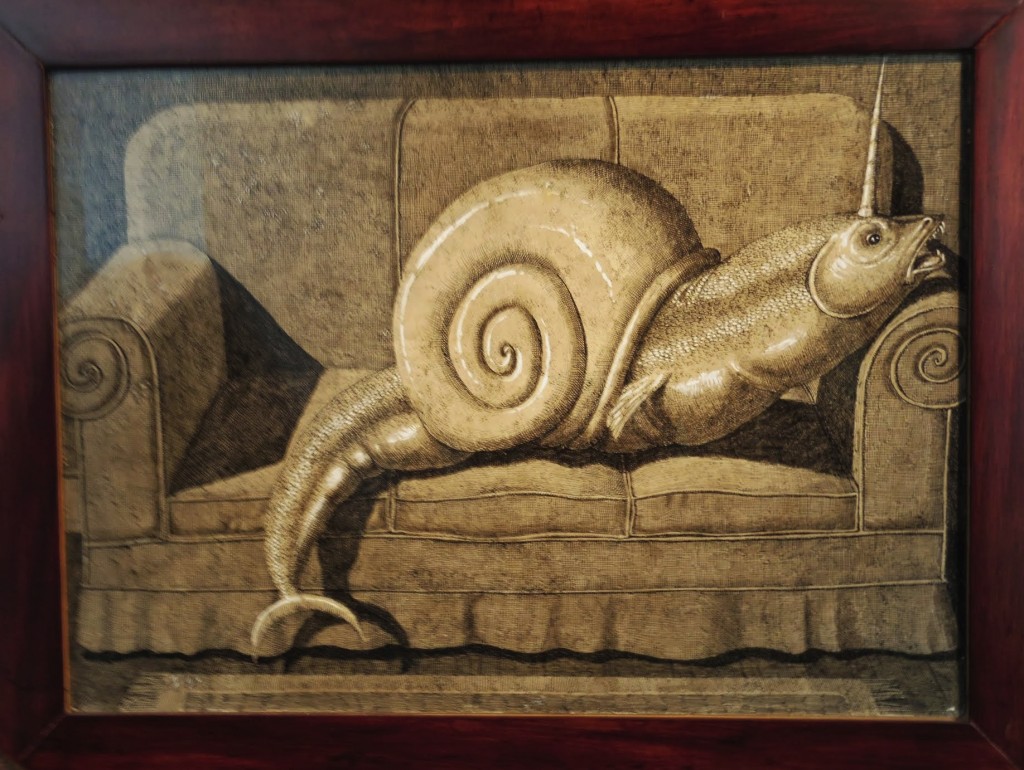The Encyclopedic Palace, 55th Venice Biennale
The Encyclopedic Palace
55th Venice Biennale
Central Pavilion and Arsenale
June 1 – November 24, 2013
Massimiliano Gioni, curator

Oliver Croy and Oliver Elser, The 387 Houses of Peter Fritz (1916-1992), Insurance Clerk from Vienna, 1993-2008; on the background: Jack Whitten, 9-11-01, 2006 (left); Achiles Rizzoli, Transfigurations , 1935-1939 (right). Photograph is courtesy of the author, all works © the artists.
The encyclopedic impulse was a dream of knowledge and collection. An obsessive reverie of gathering and classifying that rejoiced on a sense of knowledge that, as Aristotle said, began with wonder. Side-stepping into the margins of reason, it is precisely wonder that so fiercely erupts from the exploration of collecting and dreaming that frames The Encyclopedic Palace, the 2013 Venice Biennale International Exhibition.
Under the shadow of Carl Jung, at once glimmering and phantasmagorical, the exhibit presents an imaginary amalgam of objects and artistic currents whose motion operates between the conscious and the unconscious levels of the art-world. At once esoteric and intuitive, the knowledge of The Encyclopedic Palace is not categorical, but visceral and whimsical. It is knowledge-as-accumulation, jubilant in its own excess and limitlessness. It is the fictitious narratives of a wunderkammer: a series of crafted spaces and interlacing directions where the gathered objects reveal a distorted and fanciful rationality that enjoys exposing its feral irrationality.

Arthur Bispo do Rosario, Grande Veleiro, n.d. Photograph is courtesy of the author, all works © the artists.
Featuring more than 150 artists, The Encyclopedic Palace looks diachronically while avoiding self-referenciality, historical linearity, and autonomous accounts. Even the curator himself, Massimiliano Gioni, left space for Cindy Sherman to present an exhibition within the exhibition, thus fragmenting any potential totalizing exegesis. This is the exhibition at its best: an ecstasy whose materiality unravels into a visionary maelstrom that activates the possibilities of artistic production, display, and viewing. As a result, the viewer walks from room to room with a sense of curious anticipation. It is hard not to be intrigued. The joyful character of this exhibition is not trivial. For it is in this exuberance that an alternative to the marketplace can be found. In The Encyclopedic Palace, it is the viewer, and not the collector or the connoisseur, who prevails.
Acts of viewing become the bodily processes of encountering visions, personal cosmographies, and artificial images. It is an overpopulated environment of personal bestiaries and illusive biologies, like the hybrid creatures of Domenico Gnoli, or the totemic terracotta demons of Shinichi Sawada. It is too a space filled with spaces, like the patterned ink biomes of Lin Xue or the oil-on-paper engulfing sea waves of Thierry De Cordier. A space that houses other spaces, The Encyclopedic Palace is not, however, a home. It is the exposition of the ephemeral and uprooted nature of dwelling that is presented: in an empty dollhouse by Robert Gober, The 387 Houses of Peter Fritz, or the disquieting boxed interiors of Andra Ursuta, habitation is studied, replicated and organized, but not embodied.
Spaces of dwelling become frangible shells, and this frailty of constructed habitats parallels our physical confines, motivating the means to overcome it: in Yuri Ancarini’s Da Vinci, ballet-like motions of surgical technology bridges between our internal alien-like landscapes and the human lack of precision. In exploring finitude as a condition for knowledge, The Encyclopedic Palace presents an ecstasy of creation that establishes dialogues between the sexual and the transcendental, though without insisting in ontologies or pathological analyses. It thrives, for example, in the visual means to re-organize the perception of mystical experiences, like those of Hilma af Klint. But it is also a place in which culturally shared spirituality can become re-contextualized through images, as Robert Crumb’s literal and voluptuous Genesis reminds us. And here, even the encounter with a faithful representation of our external naked humanity, like John DeAndrea’s hyperrealist Arial, is an encounter with a simulacrum that escapes us, much like the fleeting histrionic characters in Ryan Trecartin films—a mythology of creation amongst many other private cosmogonies that become collective.

Evgenij Kozlov (E-E), The Leningrad Album, 1972. Photograph is courtesy of the author, all works © the artists.
At times intrigued, at times provoked, viewers may leave The Encyclopedic Palace saturated, but it is improbable that they will leave it bored. Located near the entrances of the two main areas of the Biennale, the two sections of the excellently-curated The Encyclopedic Palace are a compelling, committed proposition in favor of artistic curiosity over cultivated fame. The exhibition no doubt presents more room to breath under the high-ceiling rooms of the Arsenale, where the decision of displaying the art against traditional white gallery-style walls is more successful than that in the Giardini, where the viewer may feel compressed into a uniform gallery space. In both spaces, however, a significant challenge to the separation of inside and outside and upper and lower is felt, not as a maxim, but exemplified in action. It can certainly be an exhausting exhibition, but it is, at the same time, one that leaves the viewer thirsty for more.

Simon Denny, Analogue Broadcasting Hardware Compression, 2013. Photograph is courtesy of the author, all works © the artists.
Javier Berzal de Dios is a History of Art Ph.D. Candidate at the Ohio State University.








